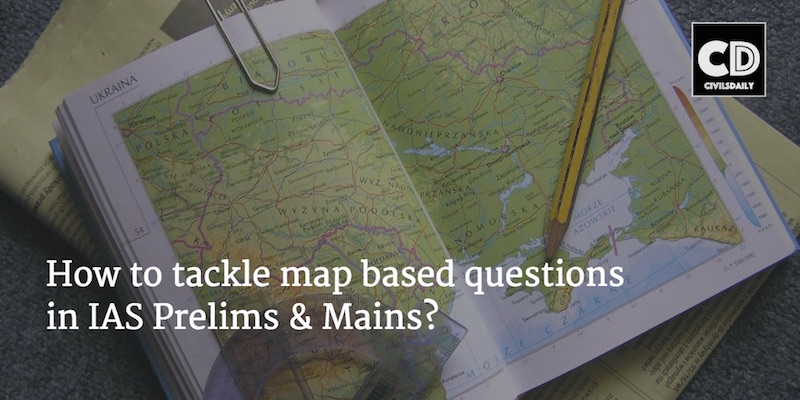Prelims has a fair number of questions from Geography and fair number of them are actually based upon the map reading by the candidates. Geography Mains Paper II has 10 map based entries carrying a weight of twenty marks (as in the last paper).
So let us see how we can attempt Map Based Questions in IAS Prelims and Mains.
For Geography Optional:
The weightage carried by map based question has been reduced from 60 to 20 as in the last year’s paper. Twenty is good enough score to be ignored and even more for the claim that getting these entries right enthrals the examiner and weighs heavily in getting good score in Paper II and a poor attempt in the map entries has opposite effect on the examiner and consequently your score in the paper (though the claim still remains to be verified by any UPSC examiner or UPSC itself). So let us see what the trend is and how we can make the best out of it.
#1. In the last two years, the entries asked have been the ones that are not unheard of (who can forget the yesteryear’s Akrimota, Pirotan, Meghnagar,Van Tivu which had candidates literally in tears in that year). Luckily now, the entries can be easily located in the Atlas and a geography candidate would have definitely prepared about 8 out of them. So, do prepare all the prominent entries in the Atlas well in advance.
#2. Many of the entries are picked from the places that repeatedly appear in current affairs but for some unknown reason are still ignored by the candidates. Make a note of all such recurring places, locate them and prepare the write-up. While locating such entries scanning its neighbourhood shall not be a bad idea either and is recommended.
#3. Do have a outline map of India and practice and make small write-ups behind it itself. Helps in quick revision and breaks the monotony of referring to the Atlas.
#4. If you are not sure of an entry take a calculated risk and at least mark it in the right state if you must. Nellore marked in Tamil Nadu can sometimes infuriate sensitive examiners. That is to say don’t take wild risks.
#5. Don’t ignore the question to be attempted in the last 15 minutes which appears to be the general tendency among the candidates. In the last minutes you shall be too tensed to might just mark them wrong and then waste time in erasing and cutting. Treat the question on par with other question.
#6. If you do not know most of the entries (something I do not foresee going by the latest trend but for an examiner fired with strong wanderlust who decides to ask unheard of entries. In that case God Bless Us!)
For Prelims:
#1. What has been mentioned about the entries in the current affairs remains true here as well, in fact even more so in Prelims. So do locate them in the Atlas.
#2. Whenever you are bored with reading heavy stuff, try map reading. Many claim it is rejuvenating and that is not without truth.
#3. The questions asked in Prelims like arranging cities or rivers or hills or the likes in a particular order are designed in a way that the entries asked are at enough distance physically that the candidates can use elimination method or even their cursory reading of Atlas to zero in on the right answer.
#4. If you have no idea about an entry, do not attempt it. More often than not it shall be a trap question. In 2009, a deceptively innocuous question on the country of location of Barail Range was asked and I still admire the examiner who had enough candidates waylaid into marking alternatives other than India.
#5. When you are dealing with map based questions and have enough time at disposal (which might be a rarity) and want to take a calculated risk then try to picture each entry separately in the Atlas and use elimination method.
#6. Do cover all the prominent entries from every continent. It is an easy attempt.
#7. When you locate a current entry in the Atlas, also notice the neighbourhood, for the neighbourhood is more enticing for few. For example, the examiner may not ask about the country the Sinai Peninsula is part of but the water bodies between which it is located.
#8. It might sound cliché now but is the most important instruction and that is, ‘Please do what you have just read in the above points!’
Happy Mapping!


